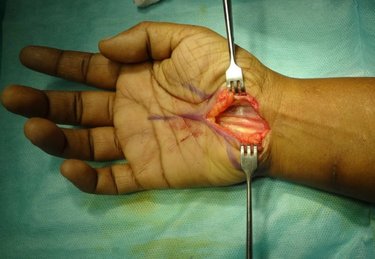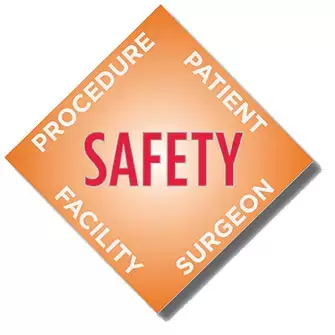CARPAL TUNNEL RELEASE
Carpal tunnel is a narrow space through which many of the structures enter the hand from the forearm. One of these structures is the median nerve and is prone to compression inside the carpal tunnel. This is referred to as carpal tunnel syndrome.
What are the symptoms of carpal tunnel syndrome?
Due to median nerve compression an affected individual may have abnormal sensation involving the thumb, index, and middle fingers. In some cases, it may be severe enough to disturb sleep. In long standing cases, it may lead to atrophy of some muscles of the hand.
What causes carpal tunnel syndrome?
In a vast majority of cases there is no definite cause. It is then referred to as idiopathic. Carpal tunnel syndrome is associated with the following conditions:
How is it diagnosed?
Carpal tunnel is diagnosed with the help of clinical examination. This is confirmed with the help of nerve conduction studies.
How is carpal tunnel syndrome treated?
Surgery to release the tunnel is the definitive treatment for longstanding cure. However, in some cases, a trial of non-surgical management can be undertaken. These include physical treatment and injection of corticosteroids. Conservative treatment is not recommended in individuals with evidence of severe nerve injury.
How is surgical carpal tunnel release undertaken?
Surgical release is a day care procedure. It is undertaken under local or regional anesthesia with sedation. The surgeon divides the roof of the carpal tunnel which is formed by the transverse carpal ligament. The operated hand is kept in a splint for a week. Sutures are removed after ten days. Light work can be resumed after one to two weeks.
What are the specific risks associated with carpal tunnel release?
This include:
What are the benefits of undergoing surgical carpal tunnel release?
These include the following:
What are the symptoms of carpal tunnel syndrome?
Due to median nerve compression an affected individual may have abnormal sensation involving the thumb, index, and middle fingers. In some cases, it may be severe enough to disturb sleep. In long standing cases, it may lead to atrophy of some muscles of the hand.
What causes carpal tunnel syndrome?
In a vast majority of cases there is no definite cause. It is then referred to as idiopathic. Carpal tunnel syndrome is associated with the following conditions:
- obesity
- oral contraceptives
- hypothyroidism
- arthritis
- diabetes
- trauma
- related to work
- tumors or swellings inside the carpal tunnel
- pregnancy
How is it diagnosed?
Carpal tunnel is diagnosed with the help of clinical examination. This is confirmed with the help of nerve conduction studies.
How is carpal tunnel syndrome treated?
Surgery to release the tunnel is the definitive treatment for longstanding cure. However, in some cases, a trial of non-surgical management can be undertaken. These include physical treatment and injection of corticosteroids. Conservative treatment is not recommended in individuals with evidence of severe nerve injury.
How is surgical carpal tunnel release undertaken?
Surgical release is a day care procedure. It is undertaken under local or regional anesthesia with sedation. The surgeon divides the roof of the carpal tunnel which is formed by the transverse carpal ligament. The operated hand is kept in a splint for a week. Sutures are removed after ten days. Light work can be resumed after one to two weeks.
What are the specific risks associated with carpal tunnel release?
This include:
- Injury to the cutaneous nerves
- Incomplete release
What are the benefits of undergoing surgical carpal tunnel release?
These include the following:
- Longstanding cure
- Speedy recovery
- Alleviation of symptoms




